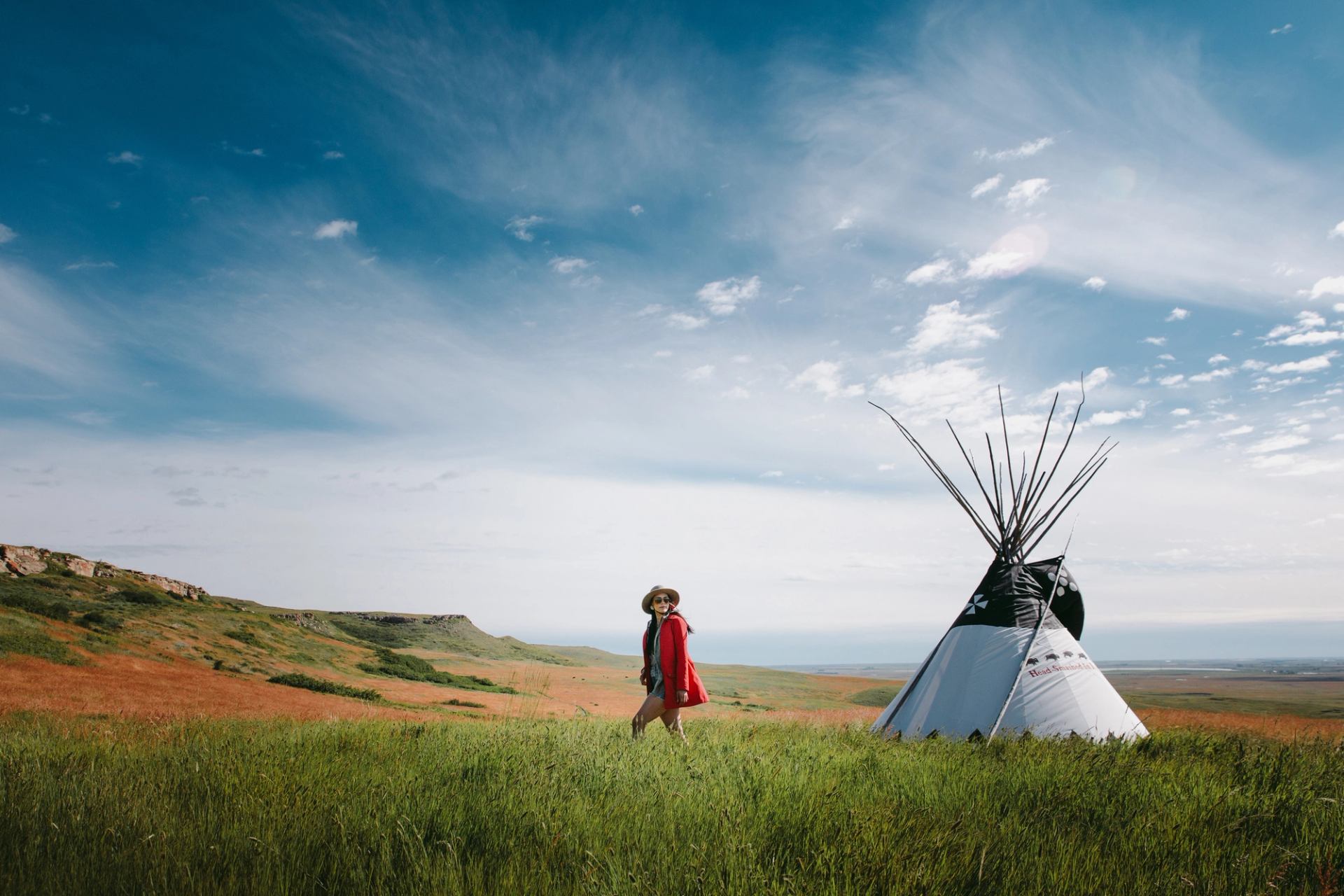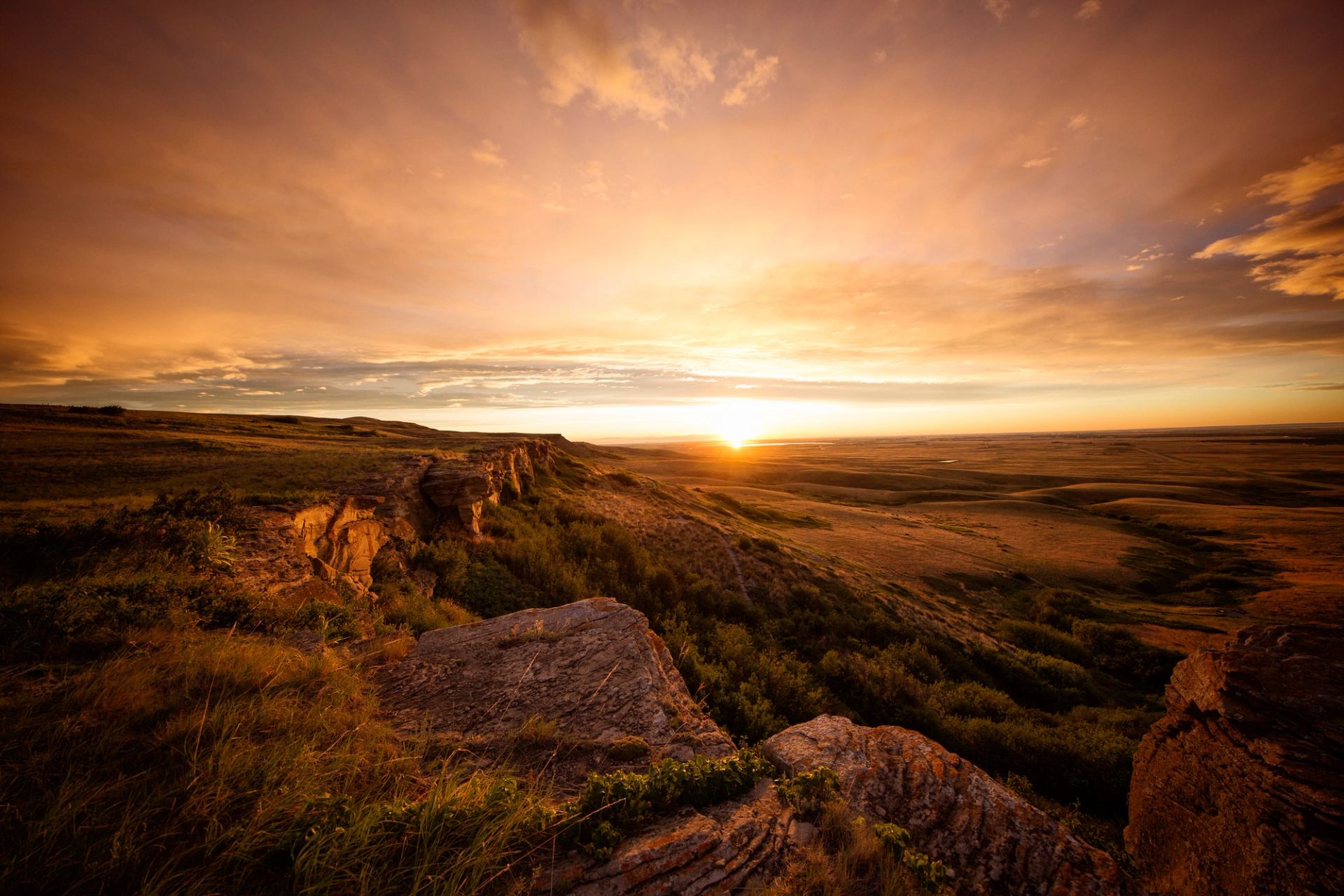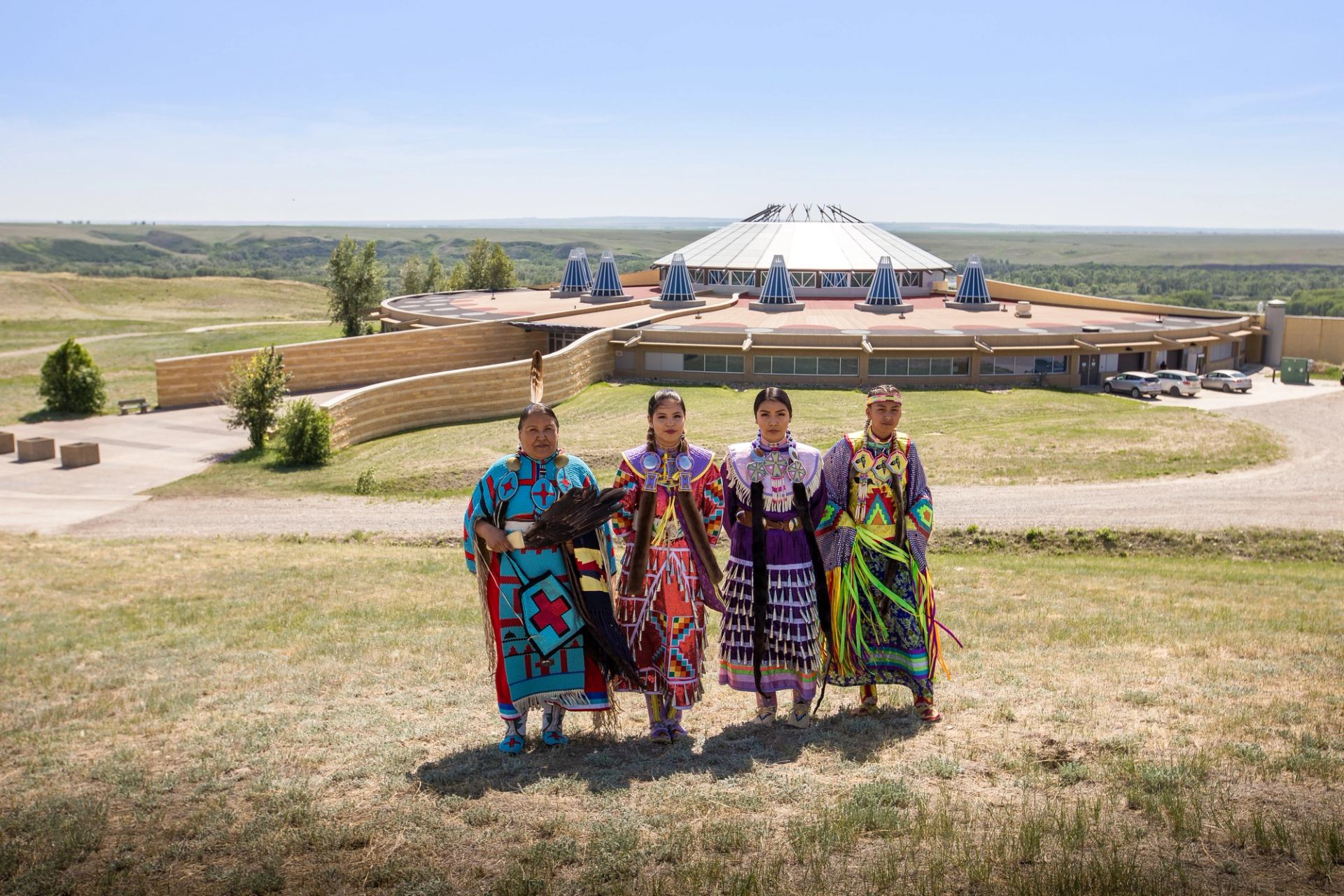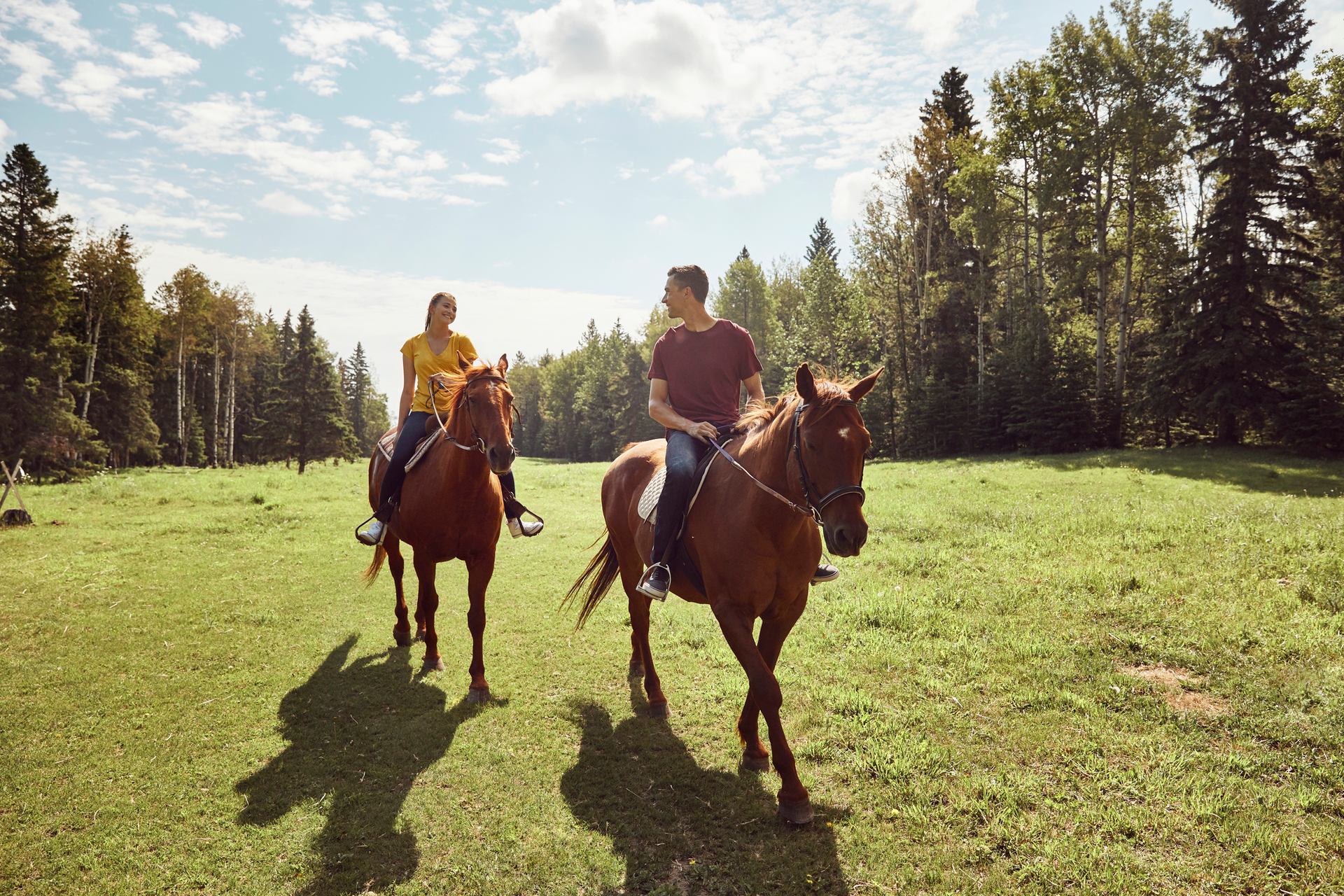Writing-on-Stone / Áísínai’pi
The Blackfoot name for Writing-on-Stone Provincial Park is “Áísínai´pi,” which means “it is pictured/written.” This UNESCO World Heritage Site has the largest collection of First Nation petroglyphs (rock carvings) and pictographs (rock paintings) on the Great Plains of North America. It also has spectacular sandstone rock formations called hoodoos, as well as unique flora and fauna.
The Blackfoot people believe Áísínai´pi is home to powerful spirits who write their truths on the rocks. In the past, Áísínai´pi was a place where young warriors came to fast and pray while on their vision quests. The on-site visitor centre here is excellent. You can book tours with a park interpreter to visit the rock art, or go for a hike on your own and explore the remarkable hoodoos.







